
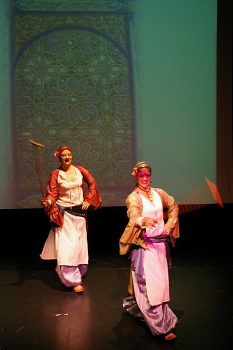

Correct positioning makes a big difference to your performance. It ensures that you can be seen by your audience and that the sightlines are clear to the lead dancers and to the chorus lead dancer. This helps with clean transitions and changes. Look for a marker ahead of you, as you look out from the stage. This could be a picture, a stage light or the stage edge.
Centre stage
Make a note of something that marks the centre stage and use this to keep a check on positioning, as you dance. I hope you find the notes and diagrams useful. These positions work with or without a chorus.

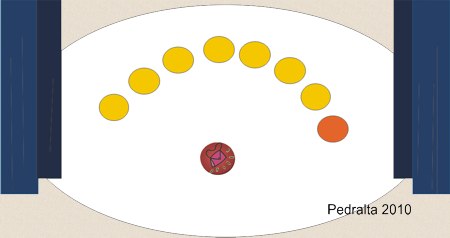
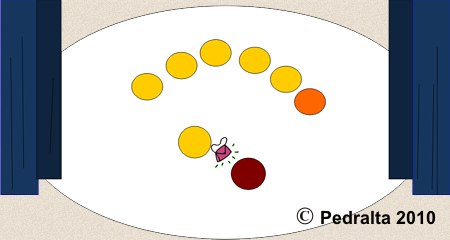
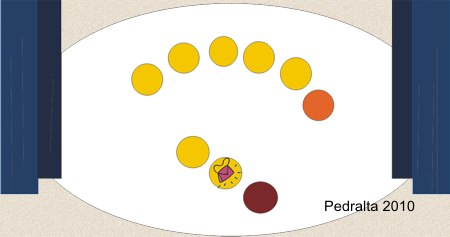
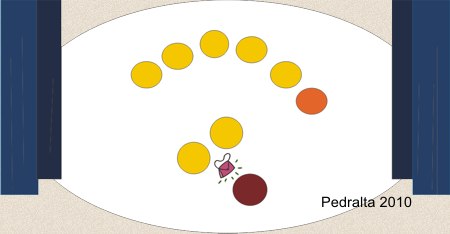
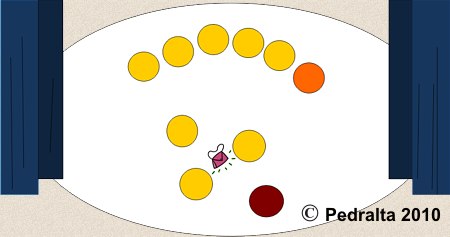
Practice
I made some notes to help me when teaching and thought they would be useful on the web site. We use the handbag to remind us where the centre stage spot is. For my weekly class, I made some cardboard cut-outs to place on the floor, to remind dancers. Dance around your handbag 🙂
Spacing
Dancers need to dance close enough together, so that they look cohesive and united, but not so close that they bump into each other. For a rough guide, position yourself about an arm’s length away from your nearest dancers. You could be closer or further when dancing in the chorus. This will depend on the number of dancers and how big the dance area is.
Dancers in the central stage area, in front of the chorus, should be far enough away to be seen as a distinct group, but not so far as to be completely separate.
Sightlines
Lead dancer of the chorus should be slightly forward of the end dancer in the chorus, so that the lead dancer’s cues can be clearly seen by the whole chorus. Dancers turn their hips slightly to the left front corner (from the stage, looking out) They face towards the audience and use their peripheral vision to follow the lead dancer.